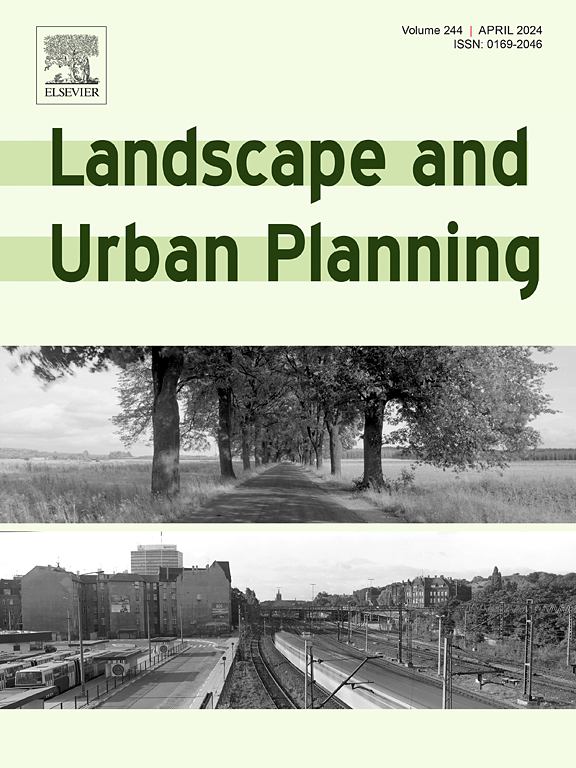森林砍伐和气候变化情景下新热带季节性干旱森林树种保护的优先区域
IF 9.2
1区 环境科学与生态学
Q1 ECOLOGY
引用次数: 0
摘要
由于森林砍伐和气候变化,阿根廷西北部的皮埃蒙特森林与大多数新热带季节性干旱森林一样,是世界上最受威胁的生态系统之一。为了规划旨在维持这种森林类型的保护战略,必须预测对生境条件预计变化的反应。本研究的目的是在当前和未来两种气候情景下,确定阿根廷西北部三种优势树种(Anadenanthera colubrina、Calycophyllum multiflorum和Phyllostylon rhamnoides)在土地利用规划类别、保护区和森林类型中的潜在分布,并确定保持稳定的幼树和成熟树的优先保护区域。何首乌在三种植物中目前的潜在分布最小,但在未来气候情景下,其潜在分布将扩大到最大。森林砍伐减少了11 - 20%,保护区也有了保护。在当前和未来的情景中,这三个物种在两个年龄层的潜在分布的10%。在未来情景中,与当前时期相比,在最高保护类别中,潜在分布的重叠将增加,但在可根据土地利用规划进行改造的低保护价值区域中,潜在分布的重叠也将增加。在当前和未来的情景中,每个物种在每个年龄类别中共同发生的潜在分布的一半或更多发生在皮埃蒙特森林。确定了三个优先保护区域,总面积为5483平方公里,其中9%目前在保护区内。因此,如果采取措施确保树木的自然再生,到本世纪末,皮埃蒙特森林有可能保持其结构和功能。面对未来的气候变化,管理政策可以通过保护本研究确定的优先区域来满足长期保护规划的需要,以确保山前森林功能的持久性。本文章由计算机程序翻译,如有差异,请以英文原文为准。
Priority areas for the conservation of tree species in a neotropical seasonal dry forest under deforestation and climate change scenarios
The Piedmont Forest in northwest Argentina, like most Neotropical seasonal dry forests, is one of the world́s most threatened ecosystems due to deforestation and climate change. To plan conservation strategies aimed at sustaining this forest type, the response to projected changes in habitat conditions must be anticipated. Our objectives were to determine the potential distribution and identify priority areas for conservation that remain stable for saplings and mature trees of three dominant species (Anadenanthera colubrina, Calycophyllum multiflorum, and Phyllostylon rhamnoides) in land use plan categories, protected areas, and forest types under current and two future climate scenarios in northwest Argentina. Calycophyllum multiflorum has the smallest current potential distribution of the three species, but expands to have the largest potential distribution under future climate scenarios. Deforestation reduced by 11–20 % and protected areas harbor < 10 % of the potential distribution of the three species in both age classes in current and future scenarios. In future scenarios, and compared to the current period, the overlap of the potential distribution will increase in the highest protection category, but also for areas categorized as low conservation value that can be transformed according to the land use plan. Half or more of the co-occurring potential distribution of each species, in each age class in current and future scenarios occurs in the Piedmont Forest. Three priority areas for conservation were identified totaling 5483 km2 of which 9 % are currently within protected areas. Thus, at the end of this century the Piedmont Forest is likely to maintain its structure and function if measures are taken to ensure that natural tree regeneration can occur. In the face of future climate change, management policies can satisfy long-term conservation planning necessary to ensure persistence of Piedmont Forest function by protecting priority areas identified in this study.
求助全文
通过发布文献求助,成功后即可免费获取论文全文。
去求助
来源期刊

Landscape and Urban Planning
环境科学-生态学
CiteScore
15.20
自引率
6.60%
发文量
232
审稿时长
6 months
期刊介绍:
Landscape and Urban Planning is an international journal that aims to enhance our understanding of landscapes and promote sustainable solutions for landscape change. The journal focuses on landscapes as complex social-ecological systems that encompass various spatial and temporal dimensions. These landscapes possess aesthetic, natural, and cultural qualities that are valued by individuals in different ways, leading to actions that alter the landscape. With increasing urbanization and the need for ecological and cultural sensitivity at various scales, a multidisciplinary approach is necessary to comprehend and align social and ecological values for landscape sustainability. The journal believes that combining landscape science with planning and design can yield positive outcomes for both people and nature.
 求助内容:
求助内容: 应助结果提醒方式:
应助结果提醒方式:


